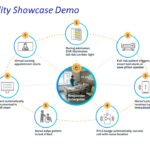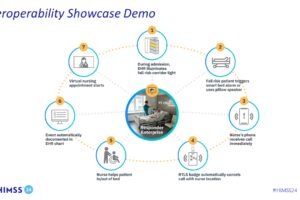 The following is a guest article by Bob Farrell, VP, Solution Delivery & CX Practice at Applause
The following is a guest article by Bob Farrell, VP, Solution Delivery & CX Practice at Applause
When it comes to healthcare, inclusivity is not a nice to have, but rather an absolute necessity. In healthcare, many patients have short- or long-term needs for accessible experiences. A lack of accessible experiences exposes companies to liability, and more importantly, their customers to faulty care. Failing to comply with accessibility standards puts patients at risk and opens the door to very expensive litigation. Meanwhile, conformance to standards should merely be a first step.
Full digital accessibility has many benefits beyond risk mitigation. Healthcare companies overlooking digital accessibility in product design and development miss the opportunity to reach a wider audience, including People with Disabilities (PwD). For example, voice functionality that serves patients with limited mobility may also prove valuable for a user with their hands full or a temporary condition, like a broken arm or hand. Or, closed captioning may be helpful for viewers trying to interact with a video in loud conditions as well as for the hearing-impaired.
Voice-enabled devices will become more commonplace in hospitals as well. Whether it’s a patient who cannot use their hands to signal for a nurse to change the television channel, or a surgeon who wants to adjust the music volume in the operating room, voice-enabled devices and apps create new possibilities across the healthcare ecosystem.
So, if digital accessibility is not just a mandate but a driver of business differentiation and customer satisfaction, why are so many failing to deliver in this area? In a recent survey conducted by Applause, nearly 70 percent of respondents said accessibility is a higher priority for their organizations than it was last year; however, just over one-third said they are conforming to the latest Web Content Accessibility Guidelines (WCAG).
Inclusive Design: Building for Accessibility from the Ground Up
The healthcare industry has a high preponderance of patients that are suffering from temporary disabilities, so the need for accessibility in healthcare is great. The challenges that face healthcare with regard to implementing digital accessibility, though, are not unlike other industries. Regardless of the industry, accessibility must be baked into how we build products, from design through development to release. When accessibility is built in from the beginning, patients have the best experiences. And, although fixes can be made later, retrofitting accessibility is a more expensive approach as this leads to a lot of rework on the development team side. Experience shows time and again that with a holistic approach, a good amount of development rework can be prevented with proper design processes.
Designing for Accessibility Requires Top-Down Cultural Change
Inclusive design is an approach to design that intentionally removes barriers that may otherwise hinder users’ meaningful interaction with products or experiences. It takes into consideration the needs of all users, beginning with the design phase. However, to develop inclusive design programs, some organizations need to begin with a cultural shift and by educating teams, establish best practices across the organization. This sometimes requires a cultural change that must start with executive support.
CEOs and other C-suite leaders can do something else: they can think about digital accessibility the same way they do physical accessibility. When a new office is being constructed, you don’t leave out the wheelchair accessway or forget the ADA-compliant bathrooms. It’s literally the exact same thing in the digital age. Accessibility for all should be imperative for every project, from the planning phase.
Designing for Accessibility
Evaluating the current state of your digital experiences is a good place to start. This helps companies understand where they are today, and set goals for improvements where needed. You will want to conduct an audit and usability benchmark of your key user journeys across the key accessibility-impacted personas. Then you want to prioritize the changes that will have the most impact. At the same time, as you are assessing where you are, you can start integrating accessibility research and design feedback into projects you are preparing to design so that newly designed features will have those considerations in mind. How a product is designed can be the difference between minor fixes versus a total redesign to make the product useful for assistive technology users.
Developing a culture of inclusivity requires a cultural shift that impacts everything you do that affects your patients: product design, development, and engineering. Having people with different disabilities as part of the design process gives your design teams new insights. Those insights are passed along to the engineering team, and continuous testing ensures you know where you hit the mark – and where you missed it.
Ultimately, embracing new practices and processes for designing and engineering your digital properties results in high-quality, inclusive digital experiences and great customer experiences for all patients and users.













